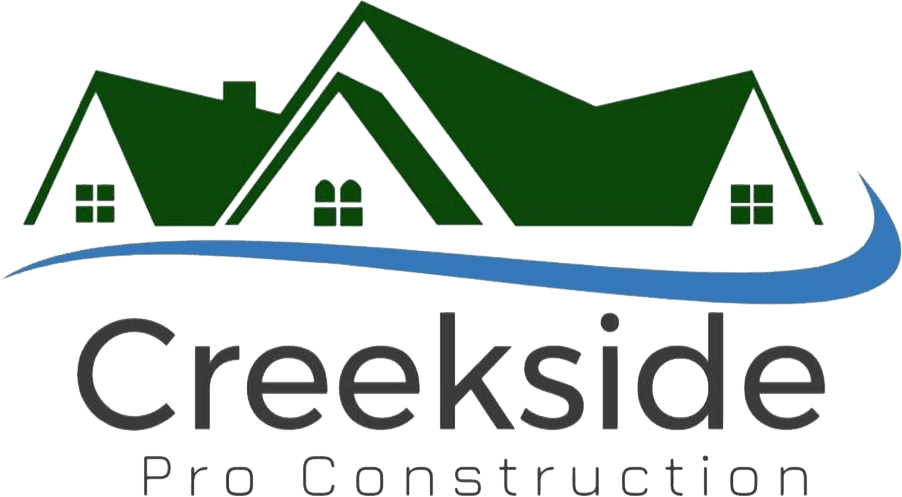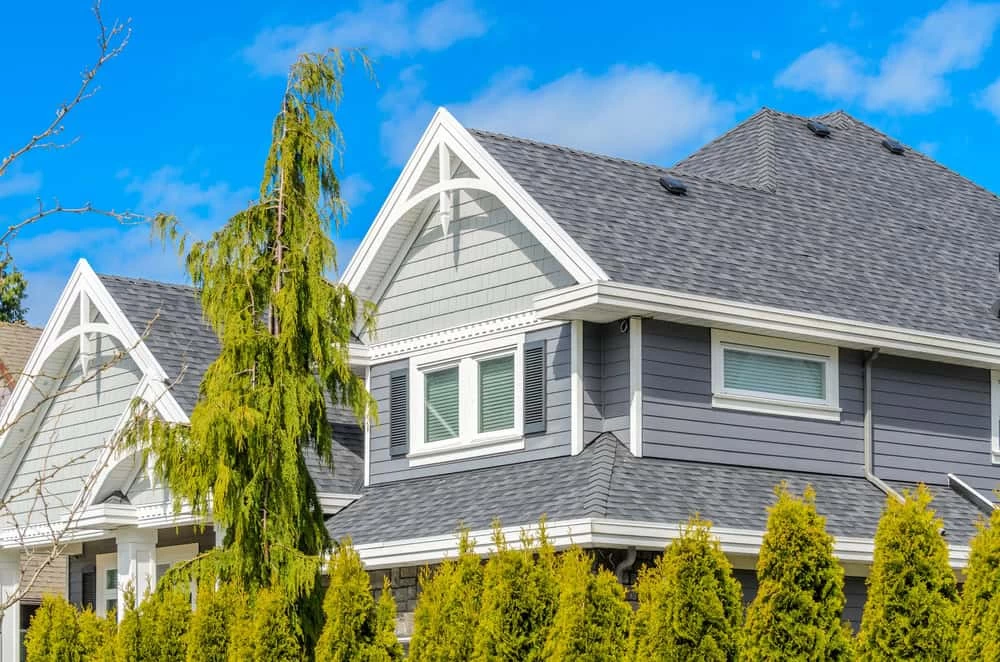Extensive Guide to Recognizing When Your Roof Needs Replacement
Your roof serves as your home’s first line of defense against the elements, protecting your family and belongings from rain, snow, wind, and harsh UV rays. However, like all components of your home, roofs have a finite lifespan and will eventually require replacement.
Recognizing the warning signs early can save you thousands of dollars in repairs and prevent catastrophic damage to your property. This extensive guide will help you identify the key indicators that your roof may need replacement.
When Age Catches Up with Your Roof
The aging process affects every roof, regardless of the quality of materials or installation. As your roof approaches the 20-25-year milestone, it enters a critical phase where even minor issues can quickly escalate into major problems. While a roof might appear perfectly intact from ground level, significant deterioration often occurs beneath the surface, hidden from casual observation.
Key Age-Related Concerns:
- Material degradation: Roofing materials naturally break down over time due to constant exposure to temperature fluctuations, moisture, and UV radiation
- Fastener loosening: Nails and screws can work loose due to thermal expansion and contraction cycles
- Sealant deterioration: Caulks and sealants around penetrations lose their effectiveness as they age
- Underlying structure weakening: Decking and support structures may develop issues that aren’t immediately visible
The 20-25-year timeframe represents the typical warranty period for most asphalt shingles and coincides with when many roofing components begin to fail simultaneously. Even if individual elements still appear functional, the cumulative effect of aging across all roof components creates vulnerability that increases exponentially with each passing year.
Signs Your Aging Roof Needs Professional Evaluation:
- Neighbors replacing roofs: If homes in your area built around the same time are getting new roofs, yours likely needs evaluation
- Increasing repair frequency: More frequent small repairs often indicate system-wide aging
- Insurance concerns: Some insurers may require inspections or refuse coverage for roofs over 20 years old
- Reduced home value: An aging roof can significantly impact your property’s market value
If your roof falls within this age range, it’s essential to have it professionally assessed by experienced contractors like Creekside Pro Construction in Contra Costa County and Alameda County, CA.
Our expert team can evaluate your roof’s remaining lifespan and help you plan for replacement before emergency situations arise, guaranteeing your home remains protected while giving you time to budget for this significant investment.
Visible Damage: Shingles and Leaks
Visible damage represents one of the most obvious and urgent warning signs that your roof requires immediate attention. What might initially appear as minor cosmetic issues can rapidly evolve into serious structural problems that compromise your home’s integrity and safety.
Critical Shingle Warning Signs:
- Cracked shingles: Temperature fluctuations cause expansion and contraction that can create stress fractures
- Curling edges: Heat and moisture cause shingles to lose their flat profile, creating entry points for water
- Missing shingles: Wind damage or age-related adhesion failure leaves underlying materials exposed
- Granule loss: Excessive granule shedding indicates advanced aging and reduced weather protection
- Blistering or bubbling: Trapped moisture creates raised areas that compromise shingle integrity
Leak Detection and Implications:
Water infiltration through your roof system creates a cascade of problems that extend far beyond the immediate leak location. Even small amounts of water can cause extensive damage over time, making early detection and repair vital.
Interior leak indicators include:
- Ceiling stains: Brown or yellow discoloration indicates active or past water intrusion
- Wall stains: Water can travel along structural members before appearing on walls
- Peeling paint: Moisture causes paint adhesion failure, particularly near ceilings
- Musty odors: Hidden moisture creates conditions for mold and mildew growth
- Sagging ceiling materials: Drywall or plaster may sag when saturated with water
Hidden damage from leaks:
- Structural rot: Wooden framing members can deteriorate when exposed to persistent moisture
- Insulation degradation: Wet insulation loses effectiveness and may harbor mold growth
- Electrical hazards: Water and electrical systems create dangerous situations requiring immediate attention
- Mold proliferation: Hidden mold growth can create serious health risks for occupants
Regular professional inspections by qualified contractors like Creekside Pro Construction can identify these issues in their early stages, preventing minor problems from becoming major disasters.
Our experienced team knows where to look for hidden damage and can offer solutions that address both visible symptoms and underlying causes.
Sagging Roof: A Serious Red Flag
A sagging roofline represents one of the most serious warning signs homeowners can find, indicating potential structural compromise that demands immediate professional intervention. Unlike other roofing issues that develop gradually, sagging often signals acute problems that can get worse quickly without proper attention.
Structural Causes of Roof Sagging:
- Excessive load: Accumulated snow, ice, or debris can exceed the roof’s design capacity
- Water damage: Prolonged exposure to moisture can weaken support structures
- Foundation settling: Uneven foundation movement can stress the entire roof system
- Inadequate framing: Original construction defects or modifications may compromise structural integrity
- Age-related deterioration: Long-term stress can cause gradual failure of load-bearing components
Immediate Safety Concerns:
A sagging roof poses serious risks that extend beyond property damage to include potential threats to occupant safety. The structural instability indicated by visible sagging can lead to sudden, catastrophic failure under certain conditions.
Critical safety considerations:
- Collapse potential: Severely compromised structures may fail suddenly, especially during severe weather
- Interior hazards: Falling debris or structural components can cause serious injury
- Emergency evacuation: Severe sagging may require immediate evacuation until professional assessment confirms safety
- Utility hazards: Structural movement can damage electrical, plumbing, or gas systems
Professional Assessment Requirements:
Roof sagging requires immediate evaluation by experienced structural professionals who can determine the extent of damage and appropriate remediation strategies. Our skilled team at Creekside Pro Construction has the expertise necessary to quickly assess sagging issues and supply effective solutions.
Professional evaluation includes:
- Structural analysis: Thorough assessment of load-bearing components and their condition
- Safety evaluation: Immediate determination of occupancy safety and emergency measures if needed
- Repair feasibility: Analysis of if repair or replacement represents the most appropriate solution
- Timeline planning: Development of action plans that prioritize safety while minimizing disruption
Early intervention when sagging first becomes apparent can often prevent more extensive damage and reduce overall repair costs. However, any visible sagging should be treated as an emergency requiring immediate professional consultation to guarantee the safety of all occupants.
Granules in Gutters: The Hidden Sign
Granule accumulation in gutters and downspouts often goes unnoticed by homeowners, yet it represents one of the most reliable indicators of advanced roof aging and impending failure. These small mineral particles serve vital protective functions, and their loss significantly compromises your roof’s ability to withstand environmental stresses.
Understanding Granule Function:
The granules embedded in asphalt shingles serve multiple essential purposes that directly impact your roof’s longevity and performance. Understanding their function helps explain why granule loss represents such a significant concern.
Critical granule functions:
- UV protection: Granules reflect harmful ultraviolet radiation that would otherwise degrade asphalt compounds
- Fire resistance: Mineral composition provides fire-retardant properties that meet building code requirements
- Weather shielding: Granules create a protective barrier against rain, hail, and wind-driven debris
- Temperature regulation: Light-colored granules help reflect heat, reducing thermal stress on roofing materials
- Aesthetic appeal: Granules offer color and texture that enhance your home’s visual appeal
Granule Loss Patterns and Implications:
Not all granule loss indicates the same level of concern. Understanding normal versus excessive loss patterns helps homeowners make informed decisions about roof maintenance and replacement timing.
Normal granule loss characteristics:
- New roof shedding: Recently installed shingles typically shed excess granules during the first few months
- Minimal accumulation: Small amounts in gutters during routine cleaning are generally normal
- Even distribution: Normal loss occurs relatively evenly across the roof surface
Concerning granule loss indicators:
- Heavy accumulation: Large quantities of granules consistently appearing in gutters and downspouts
- Bald spots: Areas of shingles where granules have been completely worn away, exposing underlying asphalt
- Uneven patterns: Granule loss concentrated in specific areas may indicate localized damage or defects
- Increasing frequency: Progressive increases in granule accumulation over time
Consequences of Granule Loss:
Once protective granules are lost, the underlying asphalt becomes increasingly vulnerable to environmental damage, accelerating the deterioration process and reducing remaining roof life significantly.
Progressive damage from granule loss:
- Accelerated aging: Exposed asphalt deteriorates rapidly when subjected to UV radiation and temperature extremes
- Cracking and splitting: Unprotected asphalt becomes brittle and develops stress fractures
- Color fading: Loss of granules results in visible discoloration and reduced exterior appearance
- Reduced weather resistance: Compromised shingles become more susceptible to wind and water damage
When you notice significant granule accumulation during routine gutter maintenance, it’s time to contact Creekside Pro Construction for a thorough roof assessment.
Our experienced professionals can evaluate the extent of granule loss and give you recommendations for maintaining your roof’s protective capabilities before more serious damage occurs.
Increased Energy Bills: An Overlooked Indicator
Rising energy costs often cause homeowners to examine their heating and cooling systems, but the roof plays an equally important role in maintaining energy efficiency. A compromised roof system can significantly impact your home’s thermal performance, leading to increased utility bills and reduced comfort levels throughout your living space.
Roof-Related Energy Loss Mechanisms:
Understanding how roof problems contribute to eco-friendliness helps homeowners recognize this often-overlooked warning sign and take appropriate action to address underlying issues.
Common energy loss pathways:
- Air infiltration: Gaps and cracks allow conditioned air to escape and outside air to enter
- Insulation compromise: Moisture damage reduces insulation effectiveness significantly
- Thermal bridging: Structural elements conduct heat and cold directly through the building envelope
- Radiant heat transfer: Damaged or inadequate roofing materials fail to reflect or absorb heat appropriately
Identifying Energy-Related Roof Problems:
Several diagnostic approaches can help homeowners determine if their roof contributes to rising energy costs and reduced comfort levels.
Energy efficiency warning signs:
- Temperature inconsistencies: Rooms that are difficult to heat or cool may indicate roof-related air leakage
- Ice dam formation: Winter ice dams often indicate inadequate insulation or air sealing in the roof system
- Drafts near the ceiling: Air movement near ceiling areas may indicate roof-related infiltration
- HVAC system cycling: Heating and cooling systems running more frequently than normal
Professional Energy Audits and Solutions:
Extensive energy audits can identify specific areas where roof problems contribute to productivity losses and offer targeted solutions that address both comfort and cost concerns.
Professional assessment benefits:
- Thermal imaging: Infrared cameras can identify areas of heat loss invisible to visual inspection
- Blower door testing: Pressurization testing quantifies air leakage and identifies specific problem areas
- Moisture detection: Professional tools can identify hidden moisture problems affecting insulation performance
- Cost-benefit analysis: Professional recommendations help prioritize improvements for maximum impact
By addressing roof-related eco-friendly issues quickly, homeowners can reduce utility costs while improving comfort levels throughout their homes.
Creekside Pro Construction offers thorough roofing services in Contra Costa County and Alameda County, CA, that address both structural integrity and energy performance, helping you maintain a productive and comfortable home environment.
Contact Creekside Pro Construction for a Professional Roof Inspection
While vigilant homeowner observation plays an important role in roof maintenance, professional inspection gives you the thorough evaluation necessary to identify hidden problems and develop effective solutions. Qualified roofing contractors have the experience, tools, and knowledge required to detect issues that may not be apparent to untrained observers.
Professional Inspection Advantages:
- Safety expertise: Trained professionals can safely access and evaluate all roof areas without risking injury
- Hidden problem detection: Experience allows contractors to identify subtle signs of damage that indicate larger issues
- Thorough documents: Professional inspections offer detailed reports that can guide maintenance and replacement decisions
- Insurance coordination: Professional assessments often satisfy insurance requirements and support claims when necessary
What to Expect from Professional Inspections:
A thorough professional roof inspection includes multiple evaluation areas and supplies homeowners with actionable information about their roof’s condition and remaining lifespan.
Comprehensive inspection components:
- Structural assessment: Evaluation of framing, decking, and support systems for signs of damage or deterioration
- Material condition analysis: Detailed examination of shingles, flashing, and other roofing components
- Ventilation system review: Assessment of intake and exhaust ventilation for proper airflow and moisture control
- Gutter and drainage evaluation: Inspection of water management systems for proper function and maintenance needs
At Creekside Pro Construction, thorough inspections make sure your roof remains in exceptional condition, regardless of if you’re planning renovations or addressing specific concerns.
Don’t wait for small problems to escalate into major expenses—schedule your professional inspection today and protect your home with confidence!





